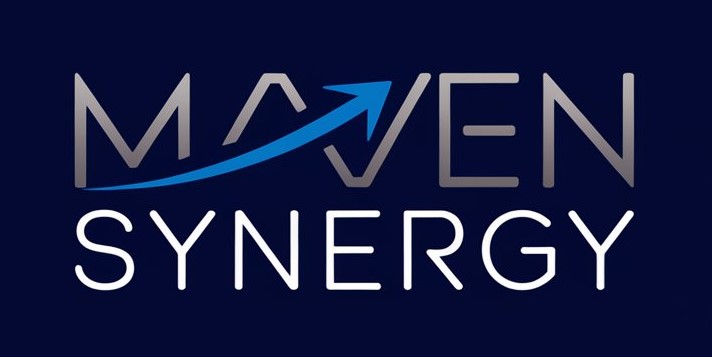Stop Wasting Life – Master 8 Productivity Rules of the Top 1%
Have you ever looked at someone like Elon Musk and wondered how they squeeze seemingly 48 hours into a 24-hour day? I used to ask myself the same question until I discovered something fascinating: the top 1% aren’t superhuman – they just follow specific productivity rules that most people don’t know about.
While most people are drowning in busy work and endless distractions, the ultra-successful have cracked the code to meaningful productivity, and I’m not talking about those generic “wake up at 5 AM” tips you’ve heard a thousand times.
These are the actual, proven rules that separate the extraordinary from the average. I built my multi-million dollar empire strictly following the rules I am about to share
In this post, I’m pulling back the curtain on the 8 game-changing productivity rules that keep the top performers consistently ahead of the pack. And the best part? You can start using them today.
Rule #1: Set Clear Goals – Your Roadmap to Excellence

You wouldn’t start a road trip without GPS, right? So why are you trying to succeed without clear goals? I learned this lesson the hard way after spending years being “busy” but not actually moving forward.
Why Goals Drive Productivity Like Rocket Fuel
Here’s something most people don’t realize: vague goals create vague results. When I started setting crystal-clear goals, my productivity DOUBLED. No joke. Your brain loves clarity – it’s like giving it a precise target to hit.
The SMART Goal Framework That Actually Works
I’ve modified the traditional SMART framework based on my experience working with top performers:
| Component | Traditional Approach | Power-Up Version | Example |
| Specific | Basic target | Detailed outcome | “Gain 5 new clients” → “Gain 5 new tech startup clients worth $10k+ each” |
| Measurable | Simple metrics | Multiple checkpoints | Weekly progress tracking with specific KPIs |
| Achievable | Within reach | Slightly uncomfortable | Should make you say “This will be challenging but possible” |
| Relevant | Aligns with objectives | Connects to bigger vision | Must directly impact your main life/career goals |
| Time-bound | Has deadline | Has milestones | Weekly targets leading to final deadline |
Aligning Your Daily Actions with Long-Term Vision
Here’s my secret sauce for goal alignment:
- Write down your 5-year vision
- Break it into yearly milestones
- Create monthly targets
- Set weekly objectives
- Plan daily tasks that directly support these goals
I keep a “goal hierarchy” on my desk that looks like this:
- 5-Year Vision: Build a 7-figure online business
- This Year: Launch two flagship products
- This Month: Complete product prototype
- This Week: Finish outline and intro module
- Today: Record first three videos
Remember, clarity is power. When you know exactly what you’re aiming for, your productivity naturally increases because every action has a purpose. I’ve seen this transform not just my life, but the lives of countless others I’ve mentored.
Rule #2: Automate Productivity – Your Secret Weapon for Unstoppable Success
Let me tell you something that changed my life: discipline isn’t sustainable, but systems are. You know those days when motivation hits rock bottom? Yeah, I’ve been there too. But here’s the game-changer – automation keeps working even when you don’t feel like it.
Why Automation Beats Discipline Every Single Time
I remember when I used to spend 2 hours every day sorting through emails and scheduling social media posts. EXHAUSTING! Then it hit me – I was doing the same tasks over and over like a hamster on a wheel. Here’s the thing: your brain is meant for creating, not repetitive tasks. When you automate, you’re essentially creating a personal assistant that works 24/7 without complaining.
Power Tools for Automation Warriors
| Task Type | Automation Tool | Time Saved Weekly | Best For |
| Email Management | Gmail Filters & Zapier | 5-7 hours | Auto-sorting and responding |
| Social Media | Buffer or Hootsuite | 3-4 hours | Content scheduling |
| Task Management | Todoist or Asana | 2-3 hours | Recurring task automation |
| Data Entry | Microsoft Power Automate | 4-6 hours | Spreadsheet updates |
Creating Your Own Productivity System
Start small. I always tell my clients to follow this simple 3-step process:
- Identify tasks you repeat at least twice a week
- Find tools that can automate these tasks
- Set up the automation and test it for a week
Trust me, once you see 3 hours of work shrink into 15 minutes, you’ll never look back!
Rule #3: Prioritize Tasks – The Art of Doing What Matters Most

Ever feel like you’re super busy but not really getting anywhere? I used to be that person – working non-stop but spinning my wheels. Then I discovered something that changed everything: not all tasks are created equal.
Mastering the Art of Prioritization
Here’s the truth bomb that transformed my productivity: being busy isn’t the same as being productive. I learned this the hard way after spending countless hours on low-impact tasks while the real needle-movers collected dust. Let me show you how to avoid this trap.
The Game-Changing Eisenhower Matrix
I’ve modified the classic Eisenhower Matrix to make it more practical for today’s world:
| Urgency → Importance ↓ | Urgent | Not Urgent |
| Important | DO NOW • Client deadlines • Crisis management • Time-sensitive opportunities | SCHEDULE • Strategic planning • Personal development • Relationship building |
| Not Important | DELEGATE • Routine emails • Most meetings • Administrative tasks | ELIMINATE • Social media scrolling • Excessive meetings • Perfectionist tweaking |
Focus on High-Impact Activities
Want to know my secret for 10x results? I spend 80% of my energy on tasks that directly affect my bottom line. Here’s how I rate task impact:
- High Impact (Focus Here):
- Revenue-generating activities
- Relationship building with key stakeholders
- Skill development in your core area
- Medium Impact (Schedule Strategically):
- Planning and organization
- Team management
- Content creation
- Low Impact (Minimize or Delegate):
- Routine administrative work
- Most emails
- General meetings
Rule #4: Time Blocking – Your Shield Against Time Theft

Let me tell you something that revolutionized my productivity: your calendar is either used by you or against you. There’s no middle ground.
The Science Behind Time Blocking
Did you know that switching between tasks can cost you up to 40% of your productive time? I didn’t believe it until I tracked my own work patterns. Time blocking isn’t just about organization – it’s about protecting your most valuable resource.
Implementation Guide for Time Blocking
Here’s my battle-tested time-blocking framework:
| Time Block | Duration | Focus Area | Energy Level |
| Power Hour | 6-7 AM | Personal development | High |
| Deep Work | 8-11 AM | Critical projects | Peak |
| Admin Block | 11-12 PM | Emails & small tasks | Medium |
| Strategy Block | 2-4 PM | Planning & creativity | Steady |
| Buffer Block | 4-5 PM | Unexpected tasks | Variable |
Overcoming Common Time-Blocking Challenges
Trust me, I’ve faced every time-blocking obstacle imaginable. Here’s how I crush them:
- Interruption Management:
- Set “do not disturb” hours
- Create a quick-response system for emergencies
- Batch similar interruptions together
- Schedule Flexibility:
- Build in 30-minute buffer zones
- Keep 20% of your day unscheduled
- Use theme days for better focus
- Energy Alignment:
- Match high-energy tasks with your peak hours
- Schedule creative work when you’re most inspired
- Save routine tasks for lower energy periods
Pro Tip: I use what I call the “90-minute sprint” method. Work intensely for 90 minutes, then take a 15-minute break. It’s like interval training for your brain, and it WORKS.
Remember, time blocking isn’t about restricting yourself – it’s about creating freedom through structure. When you know exactly what you should be working on, decision fatigue disappears, and productivity soars.
Rule #5: Limit Distractions – Your Focus is Your Fortune

Let me share something that hit me like a ton of bricks: every time your phone pings, it’s literally stealing money from your pocket. I discovered this the hard way when I tracked my productivity losses from distractions. The numbers were SHOCKING.
The True Cost of Distractions
Want to know something wild? Research shows it takes 23 minutes to fully regain focus after a distraction. But here’s what I learned from tracking my own work: the real cost is even higher.
The Distraction Cost Calculator
| Distraction Type | Time Lost Per Instance | Mental Energy Cost | Daily Productivity Impact |
| Phone Notification | 2-5 minutes | Medium | -20% Focus |
| Email Check | 5-10 minutes | High | -30% Flow State |
| Social Media | 15-30 minutes | Very High | -40% Deep Work |
| Unscheduled Meetings | 30+ minutes | Extreme | -50% Task Completion |
My Battle-Tested Focus Protection System
Here’s the exact setup I use to shield my productivity:
- Physical Environment Defense:
- Noise-canceling headphones (game-changer!)
- Dedicated workspace with minimal visual clutter
- “Do Not Disturb” sign for my home office
- Digital Fortress Setup:
- All notifications off except from VIP contacts
- Website blocker during focus hours
- Email checks scheduled 3 times daily only
- Daily Digital Detox Routine:
- Phone in airplane mode during deep work
- Social media blocked until important tasks are done
- Two-hour screen-free window before bed
Rule #6: Embrace Accountability – Your Secret Success Partner
You know what’s funny? We’ll let ourselves down all day long, but we’ll move mountains to avoid disappointing someone else. That’s why accountability is like productivity steroids – it supercharges your results.
The Power of Accountability in Action
I’ve experimented with every accountability system out there, and here’s what really works:
| Accountability Type | Success Rate | Best For | Key Benefits |
| Accountability Partner | 85% | Daily Goals | Real-time feedback |
| Mastermind Group | 90% | Big Projects | Diverse perspectives |
| Public Commitment | 75% | Habit Building | Social pressure |
| Paid Coach | 95% | Major Goals | Expert guidance |
Finding Your Perfect Accountability Match
Let me tell you about my personal system. I use what I call the “Triple A” approach:
- Align:
- Choose partners with similar ambitions
- Set clear expectations upfront
- Establish regular check-in times
- Act:
- Share daily progress updates
- Celebrate wins together
- Address challenges immediately
- Adjust:
- Review effectiveness monthly
- Modify goals as needed
- Upgrade accountability methods
Tools That Supercharge Accountability
I’ve tested dozens of accountability tools, and these are the absolute winners:
- Daily Check-ins:
- Coach.me for habit tracking
- Stickk for financial accountability
- RescueTime for time tracking
- Weekly Reviews:
- Trello for project milestones
- Google Calendar for time blocking
- Notion for goal documentation
Pro Tip: I create what I call “accountability triggers” – specific events or times that automatically prompt me to check in with my accountability partner. For example, every Monday at 9 AM, we have a 15-minute progress call. No excuses, no rescheduling.
Remember, limiting distractions and embracing accountability are two sides of the same coin – they both protect your most valuable asset: your focused attention. When you combine these rules, you create an environment where high performance becomes almost inevitable.
Don’t just read these rules – implement them TODAY. Start with one distraction elimination technique and one accountability partnership. Trust me, the results will blow your mind.
Rule #7: Continuous Learning – Your Ultimate Competitive Edge
Let me share something that transformed my life: the day I stopped seeing learning as a task and started treating it as a competitive advantage, my income DOUBLED. Here’s the thing – in today’s fast-paced world, if you’re not learning, you’re falling behind.
Why Learning Supercharges Productivity
I discovered that learning isn’t just about acquiring knowledge – it’s about upgrading your entire operating system. Think about it: every new skill you learn compounds with what you already know.
Learning ROI Framework
| Learning Type | Time Investment | Productivity Impact | Career Value |
| Technical Skills | 5-10 hrs/week | +30% efficiency | High |
| Soft Skills | 3-5 hrs/week | +40% effectiveness | Very High |
| Industry Knowledge | 2-3 hrs/week | +25% insight | Medium |
| Personal Development | 4-6 hrs/week | +35% performance | Extremely High |
My Daily Growth System
Here’s exactly how I structure my learning routine:
- Morning Power Hour:
- 20 minutes reading industry news
- 20 minutes skill-specific learning
- 20 minutes reflection and note-taking
- Skill Development Blocks:
- Focus on one major skill per quarter
- Practice new skills for 45 minutes daily
- Apply learning immediately to real projects
- Resource Optimization:
- Audible for commute learning
- Coursera for structured courses
- YouTube for quick technical tutorials
Rule #8: Reflect and Adjust – Your Success Feedback Loop

Want to know the biggest mistake I see people make? They keep pushing forward without ever stopping to ask if they’re heading in the right direction. Let me show you how to avoid this trap.
The Power of Strategic Reflection
I use what I call the “Success Mirror” technique – a systematic way to evaluate and adjust your strategies:
| Review Type | Frequency | Focus Areas | Action Items |
| Daily Review | 10 mins | Today’s wins & challenges | Next day planning |
| Weekly Review | 30 mins | Progress on key goals | Strategy adjustments |
| Monthly Review | 2 hours | Big picture alignment | Major course corrections |
| Quarterly Reset | 4 hours | Goal achievement & pivots | Strategic planning |
My Proven Weekly Review Process
Here’s the exact template I use every Sunday evening:
- Celebration Check:
- List 3 major wins
- Identify what worked well
- Document lessons learned
- Progress Analysis:
- Review all project milestones
- Track habit consistency
- Measure key metrics
- Strategic Adjustment:
- Update priority lists
- Modify time blocks if needed
- Realign goals with current reality
Making Adjustments That Stick
I’ve learned that the key to effective adjustment is what I call the “Triple R” method:
- Review:
- Examine what’s working
- Identify bottlenecks
- Analyze productivity patterns
- Revise:
- Update strategies based on data
- Modify systems as needed
- Adjust goals if necessary
- Reinforce:
- Implement new approaches
- Monitor results closely
- Celebrate improvements
Pro Tip: I keep a “Productivity Journal” where I track my experiments with different methods and systems. This has become my personal playbook for peak performance.
These final two rules complete the productivity puzzle. Continuous learning ensures you’re always growing, while regular reflection keeps you on the right path. Together, they create an upward spiral of constant improvement.
Remember, success leaves clues. By implementing these rules and regularly refining your approach, you’re not just following the path of the top 1% – you’re creating your own success story.
Conclusion: Your Path to Extraordinary Productivity

Look, I’ve shared these 8 productivity rules with hundreds of people, and here’s what I know for sure: implementing even ONE of them can transform your life. But when you combine all eight? That’s when the magic happens.
Let me break down the key takeaways that will set you apart:
- Automation is your secret weapon for consistent results
- Clear goals turn dreams into achievable milestones
- Prioritization ensures you’re always working on what matters
- Time blocking protects your most valuable resource
- Distraction management keeps you in the zone
- Accountability supercharges your commitment
- Continuous learning maintains your competitive edge
- Regular reflection ensures you stay on track
Quick-Start Implementation Guide
| Rule | Start Today By | See Results In |
| Automation | Set up one email filter | 24 hours |
| Goal Setting | Write one SMART goal | 1 week |
| Prioritization | Create your first Eisenhower Matrix | 3 days |
| Time Blocking | Schedule tomorrow in blocks | 48 hours |
Frequently Asked Questions (FAQs)
Q: How long does it take to see results from these productivity rules?
A: In my experience, you’ll notice improvements within the first week. I saw a 30% productivity boost in just 14 days by implementing time blocking and distraction management alone.
Q: Which rule should I implement first?
A: Start with clear goal setting. It’s like installing a GPS for your productivity journey – everything else becomes easier when you know exactly where you’re heading.
Q: How do I maintain motivation while implementing these changes?
A: Focus on one rule at a time. I always tell my clients: it’s better to master one rule completely than to juggle all eight poorly. Give each rule at least two weeks of focused attention.
Q: What if I fail to stick to these rules?
A: Remember this: consistency beats perfection. If you slip up, don’t beat yourself up. Just get back on track with your next task. I still have off days, but the system always helps me recover quickly.
Your journey to extraordinary productivity starts right now. Pick one rule that resonates most with you and take action TODAY. Remember, the top 1% aren’t smarter or more talented – they just follow these rules consistently.
Ready to join the ranks of the ultra-productive? The only question left is: which rule will you tackle first?
P.S. Want to supercharge your results? Share this article with someone who’ll hold you accountable. Success is better when shared!
Download my free Productivity Rules Implementation Checklist to start your journey today. Just click the link below to get instant access!

